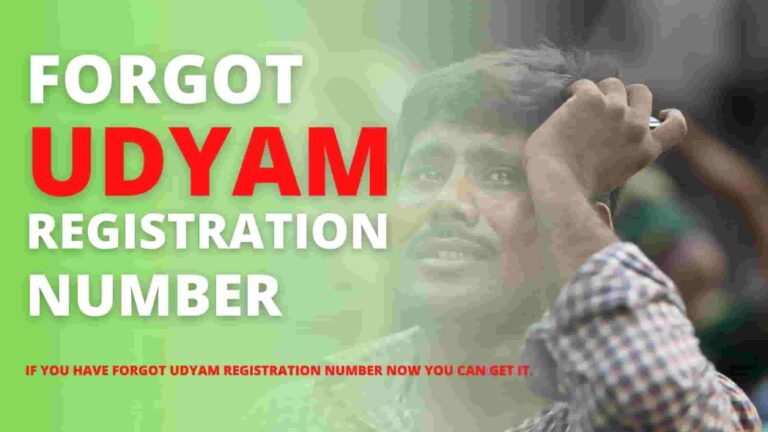We have explained about MSME/ Udyam schemes, how to apply, benefits and eligibility criteria. Read further to know in detail on udyam msme scheme for small and medium business enterprise in India.
In this article, we have attempted to provide you an easy and single point access to information about MSME Udyam schemes of the Government and their various aspects including eligible beneficiaries, types of benefits, scheme details, and how to apply for it etc.
UDYAM REGSITARTION SCHEME FORM
What is Udyam Scheme?
Udyam Schemes is a governmental scheme in India launched by the central government (Ministry of MSME) to address the social, economic & financial welfare of the micro, small and medium business owners of this nation.
These msme udyam schemes play an important role in solving many socio-economic problems like pandemic crises that beset Indian society, and thus their awareness is a must for any concerned enterprises owner.
India’s Finance Minister delivered the Union Budget 2021-22 on February 1, 2021, and made new announcements about government initiatives in India. Under the PM Garib Kalyan Yojana, a relief package worth Rs 1.70 lakh crore was announced in 2020 to address the financial issues caused by the COVID-19 outbreak. This year, the government unveiled the Aatmanirbhar package, which will cost Rs. 27.1 lakh crores and will be used to combat the effects of the coronavirus.
This article will explain all of the Government MSME Udyam Schemes 2022 that are now in effect in India. If you own a small business, you can apply for the Udyam registration scheme, which is a new online registration method.
How to Apply for Udyam Registration Scheme ?
For any enterprise who are interested in Udyam Schemes to avail the government benefits first need to register their business details on udyam registration portal and get an e-certificate i.e. udyam certificate.
If you have not yet registered as an MSME, follow the steps below to register for udhyam.
Here is the online procedure to apply for udyam registration scheme.
Step 1: Go to udyam registration portal to access the application form.
Step 2: Complete the registration application form completely and accurately.
Step 3: Pay for your registration online.
Step 4: Your MSME Udyam registration application will be started by one of the executives.
Step 5: You will receive an Udyam registration number URN & Udyam Registration Certificate at your registered email address within a few working hours.
Note: You will receive an OTP (one time password) during the process, which you must provide with our executive for further processing.
Please visit to print download a copy of your Udyam Registration Certificate or to check its validity.
According to a latest statement from the Ministry of Micro, Small and Medium Enterprises, Udyam Registration is the new process that will replace UDYOG AADHAAR as of July 1, 2020.
What is the meaning of Udyam Registration?
“What is Udyam Registration?” is a question that several new entrepreneurs have. You’ve come to the right place if you have the same question.
Udyam Registration, commonly known as MSME Registration, is a government registration that provides MSMEs with a unique Identity Number and a recognition certificate, certifying them as micro/small/medium enterprises (remove “a”). The main goal of this launch was to bring numerous benefits to India’s MSME firms.
Also check the important documents required for getting registered on udyam registration schemes.
Documents required for Udyam Registration Schemes
These are the documents required for msme udyam registration schemes
- PAN of the Organization
- GST Certificate
- Aadhaar Copy of Entrepreneur
- Social Category of Entrepreneur
- Mobile No.
- E-mail address
- Date of Commencement of Business
- BANK A/C No and IFSC Code (or Pass Book copy)
- No of Employees (With Bifurcation of Male and Female)
- Nature of Business
- Latest Audited Financial Statements
Udyam Scheme Benefits
After getting your business registered on the new udyam registration portal, the entrepreneur will get lots of benefits. The command advantages of udyam schemes are listed below.
- Reduce your purchase costs by claiming a stamp duty and registration fee exemption.
- On your overdraft, get a one-percentage-point interest rate reduction.
- Receive a 50% discount on patent and trademark fees.
- Direct tax exemptions are available to registered MSME’s.
- Electricity bill reductions
- Make a claim for the costs of acquiring ISO certification.
- Take advantage of tax benefits by obtaining government tenders fast and easily.
- Licenses, registrations, and permissions are simple to obtain.
- Subsidy on Bank Loan Interest Rates
- Exemption from direct taxation
- Eligible for international trade fares
These are only a few of the numerous benefits of Udyam Scheme Registration.
The Government Schemes are launched for the purpose of improving the livelihood of the people and providing security for leading a better life. Each scheme is launched to provide benefits to the individual in certain areas of their life. Some schemes grant financial security while others aim to provide socio-economic measures.
Rural folks, urban poor, low-income families, economically underdeveloped portions or weaker elements of society are the beneficiaries of the majority of the various initiatives.
Udyam Scheme Eligibility
According to the current announcement, the following categories of businesses are eligible for Udyam Scheme Registration:
| ENTERPRISES TYPE | ANNUAL TURNOVER | INVESTMENT |
| MICRO | 5 CRORE | UPTO 1 CRORE |
| SMALL | 5 CRORE TO 75 CRORE | UPTO 10 CRORE |
| MEDIUM | 25 CRORE TO 250 CRORE | UPTO 50 CRORE |
“A good goal combined with a poor approach frequently results in a terrible outcome.”
Covid has had an impact on almost every sector of the economy, although micro, small, and medium-sized enterprises (MSME) appear to be the hardest hit.
According to many survey estimates, this sector will lose 30-50 percent of their revenue, which is significant given their small size and susceptible position.
The government’s assistance in the form of bank guarantees, loan moratoriums, and other measures has brought some respite, but it is far from adequate. The MSME Ministry of India has introduced a new Scheme called “UDYAM” to expand access to aided schemes as part of its reform strategy.
To begin with, India is known as the “Land of MSMEs” with good reason: we have one MSME for every 21 residents (6.34 crore MSMEs), with the vast majority (99.4%) being micro firms (with less than $5 million in revenue and $1 million in investment). MSMEs are the backbone of our economy, contributing significantly to the distribution of goods, services, employment, and, as a result, wealth in our country.
More than half (51.4%), or 51.4 percent, come from rural India, with activities ranging from manufacturing (31%), trading (36%), and other services (36%). (33 per cent). Women entrepreneurs account for one-fifth of all MSMEs, which employ over 100 million people.
The industry has struggled to obtain organised financing, with approximately two-thirds of MSME loans coming from unofficial sources. Since the nationalisation of banks in 1969, a concerted effort has been made to increase priority sector lending (including MSME financing). Banks must lend priority sector loans 40 percent of their net credit exposure (PSL). Furthermore, PSL is subject to less regulatory constraints, lowering borrowing costs by about 2% to 3%.
The MSME Development Act was enacted to aid the growth and competitiveness of small businesses. Various enabling legislation, such as amendments to income tax forms, GST rebates, banking requirements, and so on, were enacted as a result to encourage their expansion.
The lack of access to high-quality data has hampered the implementation of tailored social programmes. The Udyog Aadhaar Memorandum (UAM) was launched to facilitate MSMEs’ identification and access to various schemes, and more than 8.6 million (as of January 2020) units were registered under the Scheme. In July 2020, however, the UAM was replaced by UDYAM.
UDYAM is an “online only” registration that allows entities in the manufacturing and service sectors to be classified as Micro Small Medium Enterprises based on investment and turnover. For determining acceptable turnover and investment conditions, the programme integrates both income tax and GST filings.
Beyond the first year, the Ministry’s recent notification, dated June 26, 2020, makes investment and turnover criteria determinable based on tax filings (both income tax and GST) rather than self-declaration. Over a million units have registered under UDYAM as of October 2020. (37 per cent manufacturing and 63 per cent services).
Furthermore, the RBI has made it mandatory for MSMEs to be registered through the UDYAM scheme programme in order to be eligible for loans, according to a notification dated August 21, 2020.
Note: This website belongs to a consulting firm that offers consulting services. We explicitly state that we are independent private consultants. We have no ties to any government individual or department, and we do not represent them. If you need our help in udyam registration can simply follow the above procedure.




